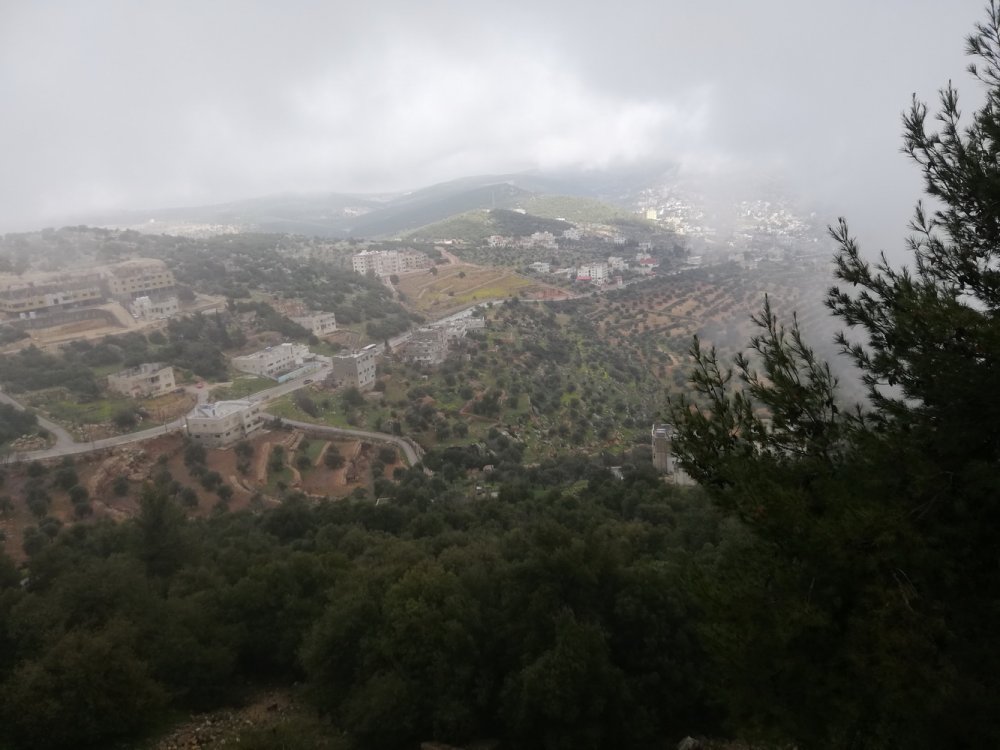Ajloun
Ajloun is a remarkable place that clearly illustrates the connections between the land, its people, and the cultures that have created its rich history. Located in the highlands 70 kilometers northwest of Amman, Ajloun is a green escape. It is a crossroads where people of several cultures have met. Today, Ajloun is an agricultural community with an immense pride in the RSCN's Ajloun Reserve and a deep interest in the ruins and archeological sites being excavated in the region.
This region has been inhabited since Neolithic times. While Ajloun was not one of the cities of the Decapolis, it benefited from its proximity to several of them. The number of early churches and Biblical sites here speak to the importance of the area.
Saladin's nephew built a castle in the late 1180's to protect the iron mines from the Crusaders in the 16th century.
The Saracen Qala'at Ar-Rabad served as Saladin's base as he evicted the Crusaders from Jordan in 1189. Located on the summit of Mount Auf about 1200 meters above sea level the original castle had four towers protected by a moat about 16 meters wide. Its commanding position allows views over Wadi Kufranjah, Wadi Rajeb and Wadi Al-Yabes, as well as over the Jordan Valley and Lake Tiberias, providing an important defensive advantage. It served as a check to the Crusader Belvoir Fort in Israel and was part of the messenger system of beacons and carrier pigeons that carried news from Damascus to Cairo in only one day.
In 1260 the castle was destroyed by the Mongol invaders, but was almost immediately rebuilt. Later in 1837 and 1927 earthquakes damaged the castle, but it is currently being restored. It is one of the best examples of Arab military architecture in the Levant.
After walking across the bridge over the dry moat, walk through the doorway into the main body of the castle. Don't miss the carvings of the pairs of birds, indicating the importance of carrier pigeons to its history. The galleries and rooms form a warren to wander through, with fabulous glimpses of the surrounding countryside visible from every arrowslit. Architectural features such as the gap in the ceiling for pouring boiling oil, and the storehouses of stone catapult missles, allow the imagination free rein. It is worth climbing to the top of the castle for the views and an interesting perspective of the shape of the castle. RSCN has a guided hike here from the Ajloun Reserve, which provides not only an interesting walk through the region, but also a unique perspective on the castle's defenses.
Kaneesit Mar Elyass, or St. Elijah's Church, has been known as a sacred place for many years. Excavations carried out in the late 1990s uncovered a Byzantine cross-shaped building measuring 33 x 32 meters, with mosaic floors covered in geometric or floral designs. One mosaic states in red letters that the presbyter Saba and his wife offered the church as an expression of their faith in the year 622 AD; this is the same year that Prophet Mohammed (PBUH) went to Mecca. Another smaller room has a mosaic floor and cultural artifacts that date from the 2-3rd century.
RSCN's Ajloun Reserve is located on 13 acres of oak, pistachio and carob trees, with seasonally available tents, cabins and a center for education. Several hikes are available, including the guided hike to Mar Elyass and its continuation to Ajloun Castle. Another guided hike climbs up to the eagle habitat, down to the RSCN community-based soap factory in Ourjan, and then to a delicious lunch hosted in one of the local farms.
At its highest point, Ajloun sits 1500 meters above sea level; a quarter of an hour later, in the Jordan Valley, the land drops to 412 meters below. The drama of the area, its bio-diversity and the connection of the people to the area make this a memorable place to learn about the rich history Jordan has to offer.
Text from "Amazing Jordan" (Writer: Jennifer Marsh, Editor in Cheif: Luma Masri, Publisher and owner: Promoskills).
Photo Gallery






















































































